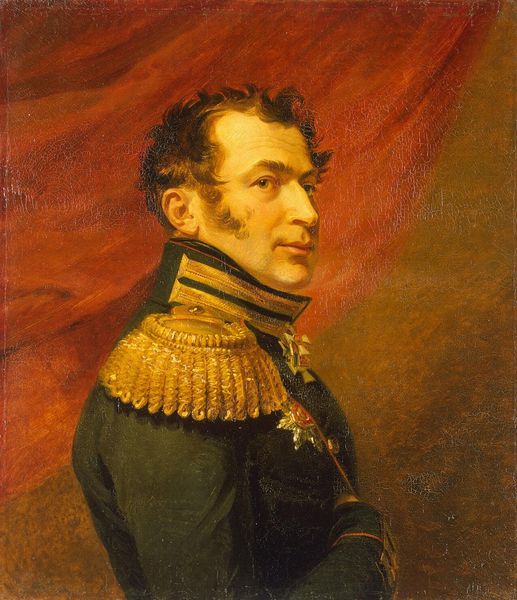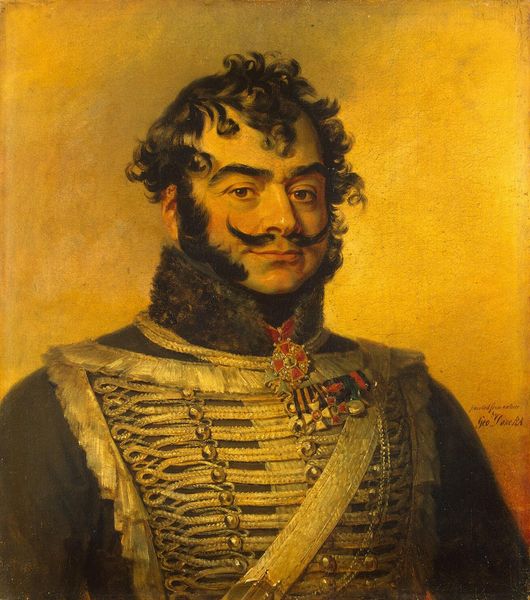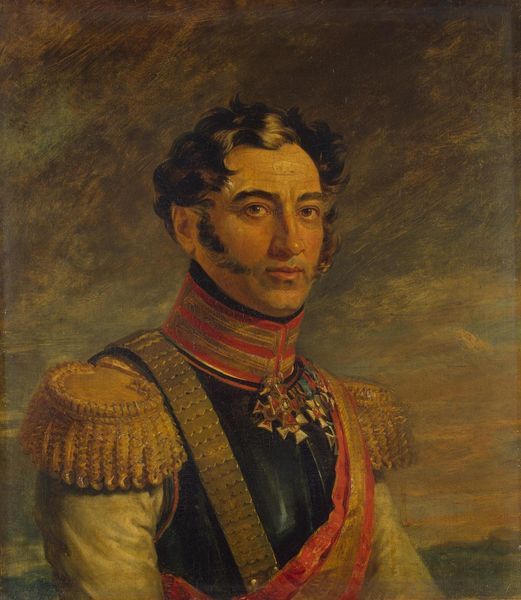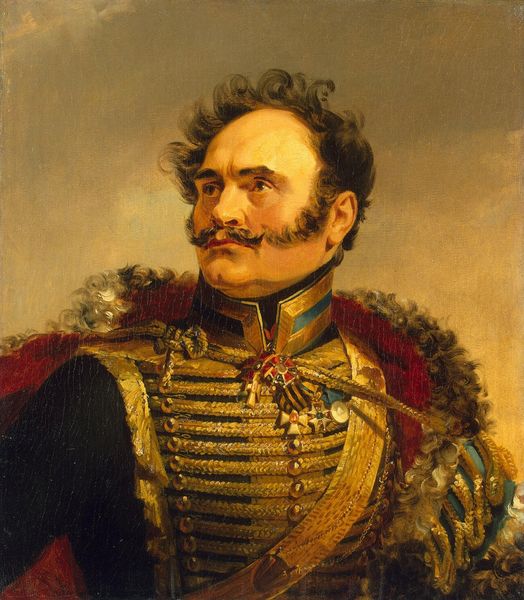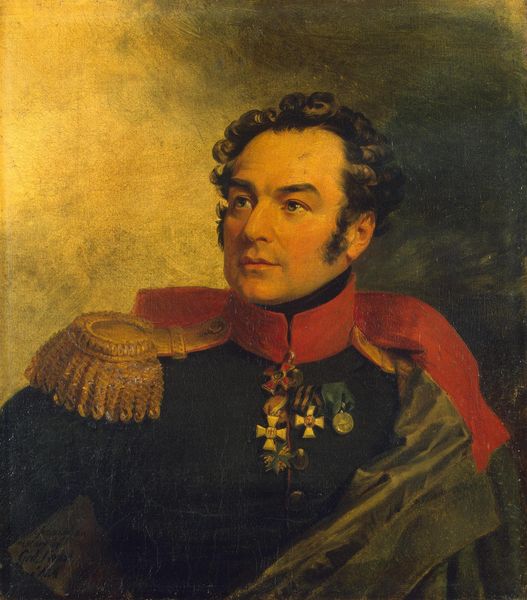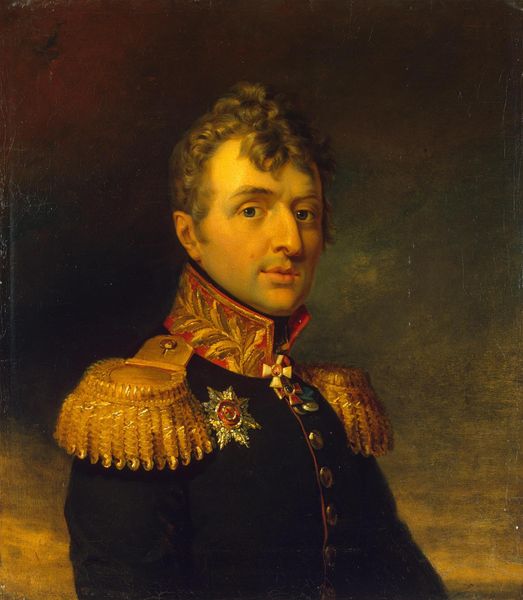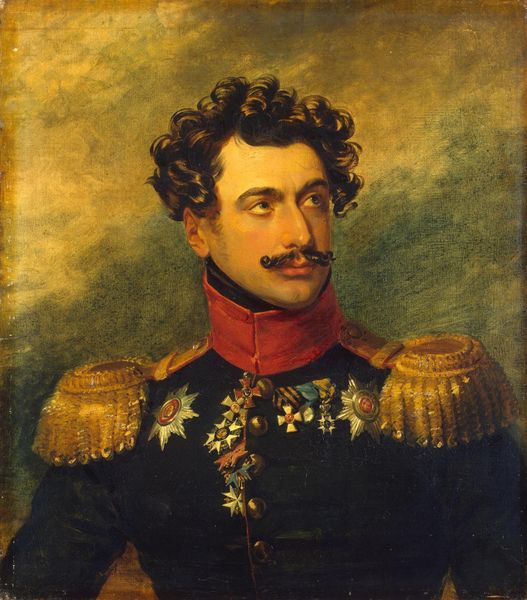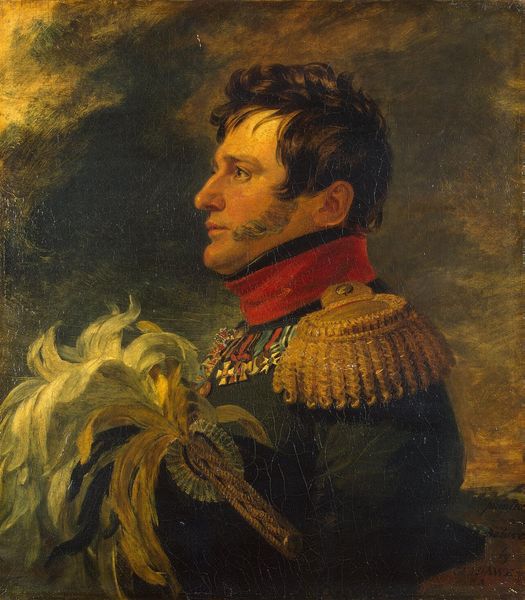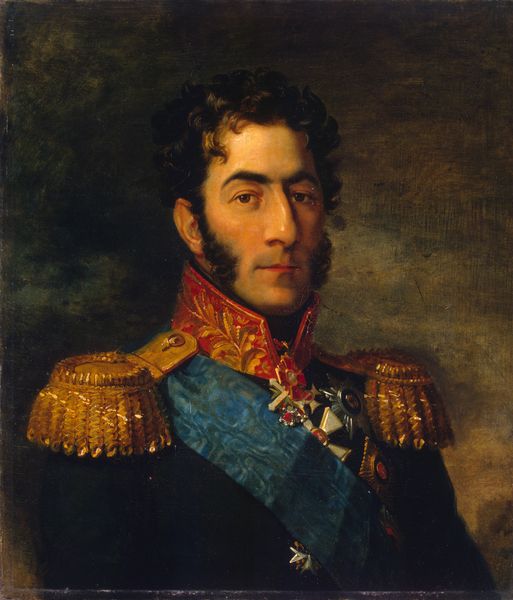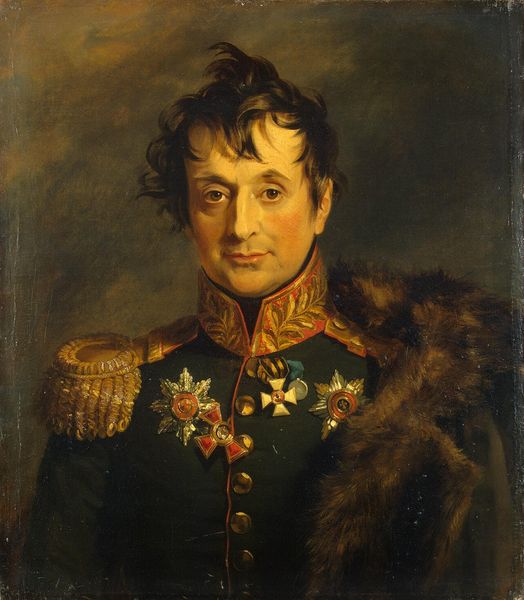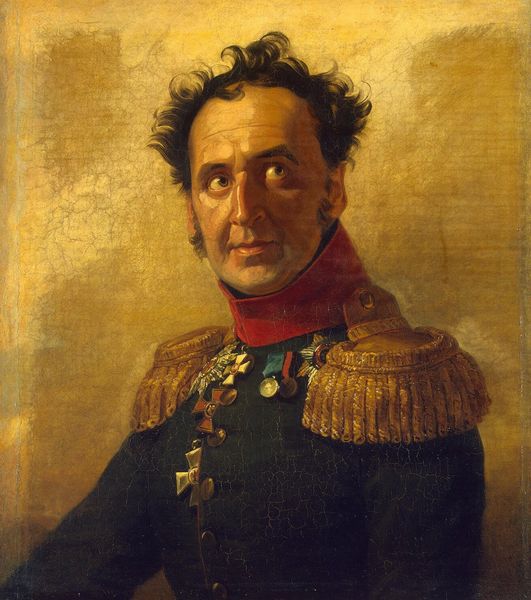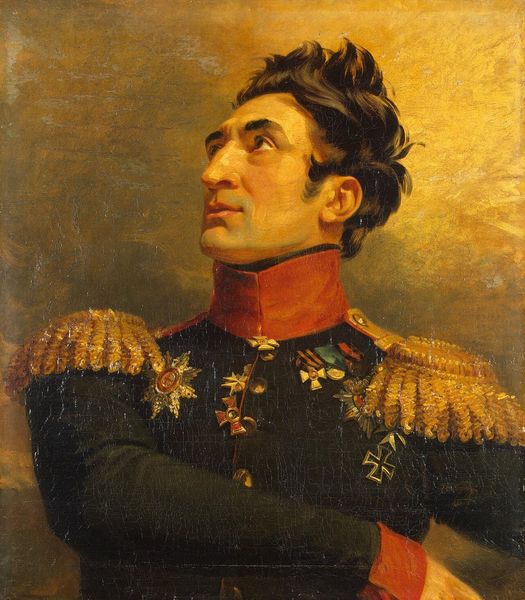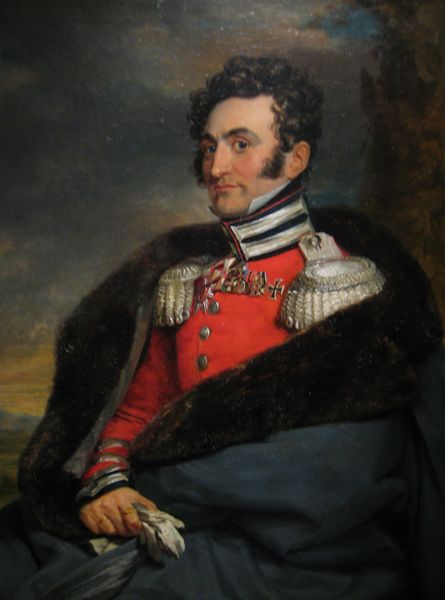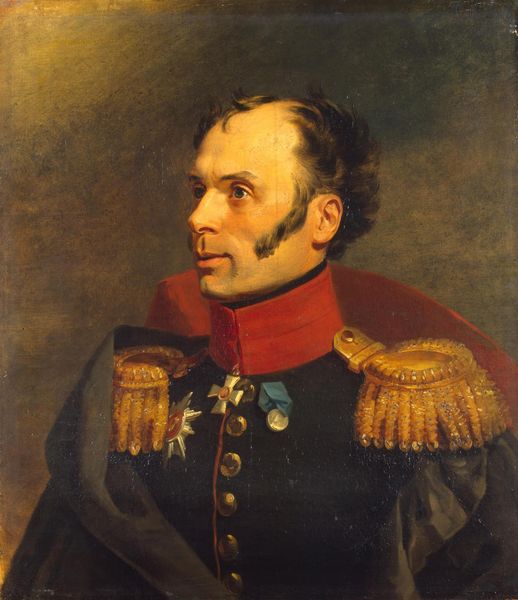
oil-paint
#
portrait
#
oil-paint
#
figuration
#
oil painting
#
romanticism
#
history-painting
#
academic-art
Copyright: Public domain
George Dawe painted this portrait of Vladimir I. Kablukov sometime in the early 19th century with oil on canvas. Dawe was an English portrait artist who gained considerable recognition in Russia for his portraits of Russian generals who participated in the Napoleonic Wars. Portraits such as this one played a crucial role in constructing and disseminating particular images of Russian military and political figures. The stern gaze and formal attire of Vladimir communicate power, authority, and nobility, reflecting the importance of social status and military achievement in that period. While seemingly celebrating individual accomplishment, these portraits can be seen as tools for reinforcing the values of the Russian aristocratic elite. What does it mean to have one's likeness captured and immortalized, especially when that image is consciously crafted to project a specific identity? How might such formal portraits both reflect and shape one's sense of self and societal role? The weight of history, status, and identity converge in this painting, prompting us to consider the complex relationship between representation, power, and the individual.
Comments
No comments
Be the first to comment and join the conversation on the ultimate creative platform.
